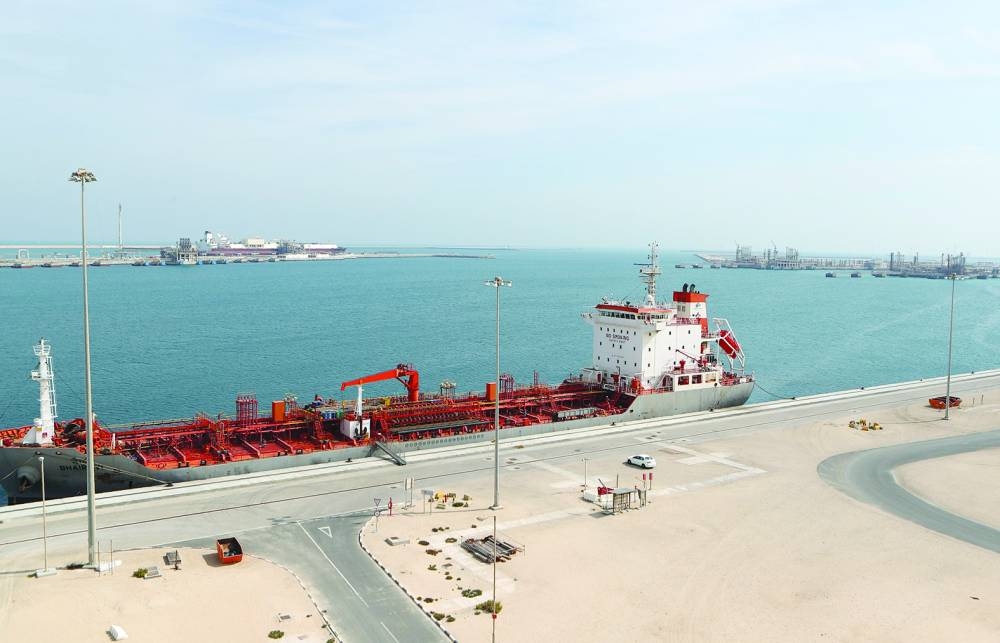Qatar remained the top LNG exporting country among GECF members and among top three globally in August, according to the Doha-headquartered Gas Exporting Countries Forum (GECF).
In August, the top LNG exporting countries were the US, Australia and Qatar, GECF said in its latest monthly report.
Global LNG exports jumped by 4% (1.29mn tonnes) y-o-y to reach 33.23mn tonnes in August, driven by increased shipments from both GECF and non-GECF countries, offsetting weaker LNG reloads. Non-GECF countries' share of global LNG exports grew from 50.2% in August 2022 to 51.7% in August this year, while GECF member countries' share dropped from 48.1% to 47% during the same period, due to stronger growth in non-GECF exports.
Additionally, LNG reloads' contribution to global exports decreased from 1.7% to 1.3%.
From January to August, cumulative global LNG exports grew by 3.9%, totalling 271.44mn tonnes, GECF noted.
Last month, LNG exports from GECF member countries and observers reached 15.62mn tonnes, representing a y-o-y growth of 1.7%, equivalent to 0.26mn tonnes.
This notable increase was primarily driven by Algeria, as well as Angola, Malaysia, and Mozambique.
In contrast, LNG exports declined in Egypt, Equatorial Guinea, Nigeria, Norway, Peru, Qatar, Russia, Trinidad and Tobago and the United Arab Emirates.
Between January and August this year, the cumulative LNG exports from GECF member countries increased by 1.4% y-o-y, reaching a total of 131.1mn tonnes.
Last month, LNG imports in the Mena region expanded by 28% (0.24mn tonnes) y-o-y to reach 1.12mn tonnes.
The higher LNG imports were driven mainly by Kuwait and the United Arab Emirates.
Between January and August, Mena’s cumulative LNG imports were down slightly by 0.5% (0.03mn tonnes) y-o-y, reaching 5.06mn tonnes.
The hotter-than-usual weather in August increased Kuwait's electricity demand, requiring additional LNG imports.
The total number of LNG export cargoes fell by 3% m-o-m in August, reaching 493. After the first eight months of the year, the total number of shipments was 4,139.
This represented a 1% increase, or 38 cargoes, compared with the same period in 2022.
Over the eight months of 2023, there have been notable increases in cargo shipments from the US (55), Algeria (31) and Norway (28), when compared with the same period in 2022.
On a relative basis, Norway has recorded a 140% increase in cargo deliveries during the eight months of 2023, in contrast to the same period one year ago.
The next highest percentage increases were observed in Algeria (22%) and Angola (19%).
In August 2023, the spot charter rate for steam turbine LNG carriers gained 39% m-o-m, to reach an average of $59,900 per day.
This price was 70% greater than the August 2022 levels and is $20,800 per day higher than the five-year historical average for this vessel class.
Regarding the other segments of the LNG carrier fleet, both TDFE and two-stroke vessels observed increases in the spot charter rate as well.
For TDFE carriers, the spot charter rate rose by 42% m-o-m to reach $94,600 per day. Similarly, for two-stroke carriers, the spot charter rate rose by 33%, reaching $121,500 per day.
The daily spot charter rate for steam turbine LNG carriers remained relatively unchanged in July indicating that the market is now tightening.
As expected during this time of year, the number of vessels which are being taken out of rotation to be used as floating storage around Europe is increasing.
In addition to this, the tensions surrounding potentially prolonged strikes at LNG facilities in Australia have been reflected in spikes in Asian LNG prices.
This development, along with the high gas storage levels in Europe, has fuelled the arbitrage, leading to increased cross-basin flows from the Atlantic to the Pacific basin.
The average price of the leading shipping fuels increased by 9% m-o-m in August 2023, to reach $610 per tonne. This price was 20% lower than one year ago, GECF noted.

A part of the Ras Laffan Industrial City (file). Qatar remained the top LNG exporting country among GECF members and among top three globally in August, according to the Doha-headquartered Gas Exporting Countries Forum.

